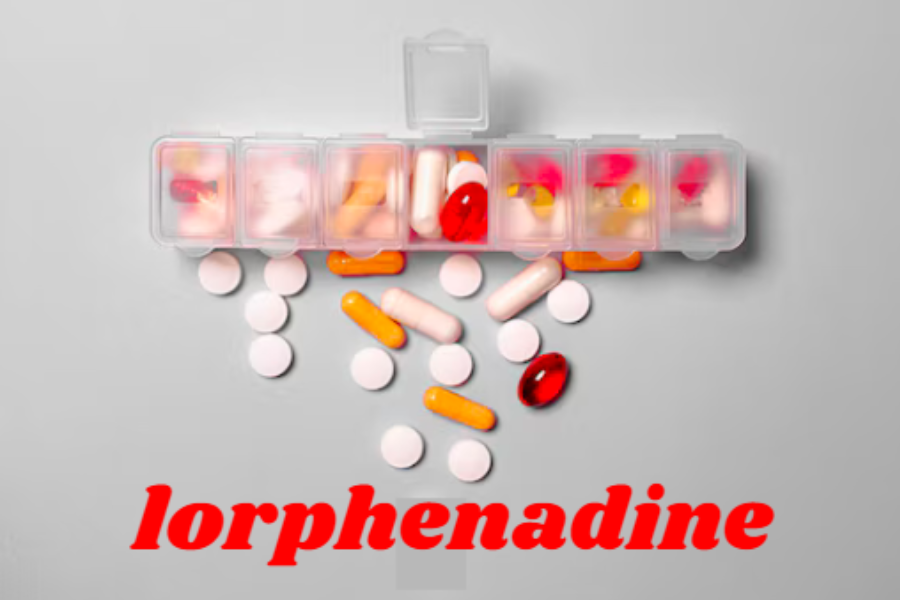In the intricate realm of medicinal compounds, few substances play as pivotal a role as Lorphenadine. This remarkable medication, though often overshadowed by its more prominent peers, serves as an unsung hero in the battle against muscle discomfort and related ailments. Our journey today delves into the essence of Lorphenadine, exploring its uses, mechanisms, and precautions to understand how it aids in alleviating muscle pain and contributes to overall well-being.
The Tale Begins: What Is Lorphenadine?
Lorphenadine is a compound within the family of skeletal muscle relaxants. It emerges as a potent ally for those suffering from muscle-related issues. Imagine a weary traveler burdened by the strains of life’s endeavors – Lorphenadine steps in to offer solace. This medication is specifically designed to provide relief from discomfort caused by muscle injuries, such as strains and sprains, and to address the fatigue of overexerted muscles. Its role is to facilitate recovery and promote comfort, making it an essential tool in muscle rehabilitation.
The Quest for Relief: How Does Lorphenadine Work?
The exact mechanism of action of Lorphenadine remains a subject of ongoing research. However, its effects are well-documented and appreciated. Lorphenadine is believed to work primarily through its interaction with the central nervous system. It influences motor centers in the brain, effectively reducing muscle spasms and offering relief from pain. Some theories suggest that it may also interact with the medulla, a part of the brainstem, to modulate nerve signals and contribute to muscle relaxation.
Although the precise pathways through which Lorphenadine exerts its effects are not fully understood, its ability to alleviate muscle pain and discomfort is well-established. By acting on the central nervous system, Lorphenadine helps restore balance to overworked or injured muscles, allowing individuals to resume normal activities with reduced discomfort.
The Hero’s Journey: Uses and Side Effects
Lorphenadine is most commonly employed to address a range of muscle-related conditions. Its therapeutic uses span several scenarios:
Common Muscle Conditions Treated by Lorphenadine
- Muscle Strains and Sprains: Lorphenadine is particularly effective for treating muscle strains and sprains. Whether incurred during physical exertion at the gym or from daily activities like gardening, Lorphenadine helps to alleviate pain and facilitate healing by relaxing the affected muscles.
- Injury-Induced Discomfort: It also plays a crucial role in managing discomfort resulting from various injuries, including sports-related incidents or accidental falls. The medication aids in reducing muscle spasms and pain, contributing to a more comfortable recovery process.
- Parkinson’s Disease Tremors: In addition to its use in acute muscle injuries, Lorphenadine has shown potential in alleviating the tremors associated with Parkinson’s disease. By reducing muscle rigidity and spasms, it can improve the quality of life for individuals suffering from this chronic condition.
Despite its benefits, Lorphenadine is not without potential side effects. Common side effects include dizziness, drowsiness, and dry mouth. These side effects, while generally manageable, require attention to ensure a safe and effective treatment experience.
Precautions for Using Lorphenadine
When incorporating Lorphenadine into a treatment regimen, it is essential to adhere to certain precautions to maximize its benefits while minimizing potential risks. Here are key considerations:
- Regular Check-Ups: Routine consultations with your healthcare provider are crucial to monitor your progress and assess the medication’s effectiveness. Regular blood tests may be required to detect any adverse effects and adjust the dosage as needed.
- Allergic Reactions: Although rare, Lorphenadine can cause severe allergic reactions, including anaphylaxis. Symptoms such as difficulty breathing, swelling, or hives necessitate immediate medical attention. Ensuring that your healthcare provider is aware of any previous allergic reactions can help mitigate these risks.
- Avoid Alcohol: The consumption of alcohol while taking Lorphenadine can lead to adverse interactions and exacerbate side effects such as drowsiness and dizziness. It is advisable to refrain from drinking alcohol during the course of treatment.
- Dry Mouth: Lorphenadine may cause dryness in the mouth. To alleviate this, consider using sugarless candy, gum, or saliva substitutes. Persistent dry mouth should be addressed with your dentist to avoid complications.
Managing Dizziness While Taking Lorphenadine
Dizziness is a common side effect of Lorphenadine, and managing it effectively is vital for maintaining safety and comfort. Here are some strategies to manage dizziness:
- Sit or Lie Down: If you experience dizziness, find a safe place to sit or lie down until the sensation subsides. This helps prevent falls and allows your body to regain equilibrium.
- Change Positions Slowly: When transitioning from sitting or lying to standing, do so gradually to prevent sudden drops in blood pressure, which can lead to dizziness. Holding onto stable surfaces can provide additional support.
- Avoid Risky Activities: While experiencing dizziness, it is advisable to avoid activities that could be hazardous, such as driving or operating heavy machinery. Prioritizing safety helps prevent accidents and ensures a safer experience with the medication.
The Final Chapter: Conclusion
As our exploration of Lorphenadine draws to a close, it becomes evident that this medication holds a unique place in the realm of muscle relaxants. Its ability to provide relief from muscle pain and discomfort, coupled with its role in managing chronic conditions like Parkinson’s disease, underscores its value as a therapeutic agent.
However, like any medication, Lorphenadine requires careful use and consideration. By understanding its benefits, side effects, and necessary precautions, individuals can harness its potential to enhance their quality of life. Remember, Lorphenadine is a tool in the broader toolkit of muscle care, working in concert with rest, physical therapy, and other interventions to achieve optimal results.
In conclusion, Lorphenadine represents a quiet but powerful force in the realm of muscle relaxation and pain relief. As we continue to unravel the mysteries of its mechanisms and applications, it remains an invaluable ally for those seeking respite from the strains and stresses of daily life. Use it wisely, and let its healing effects guide you toward a path of comfort and recovery.
